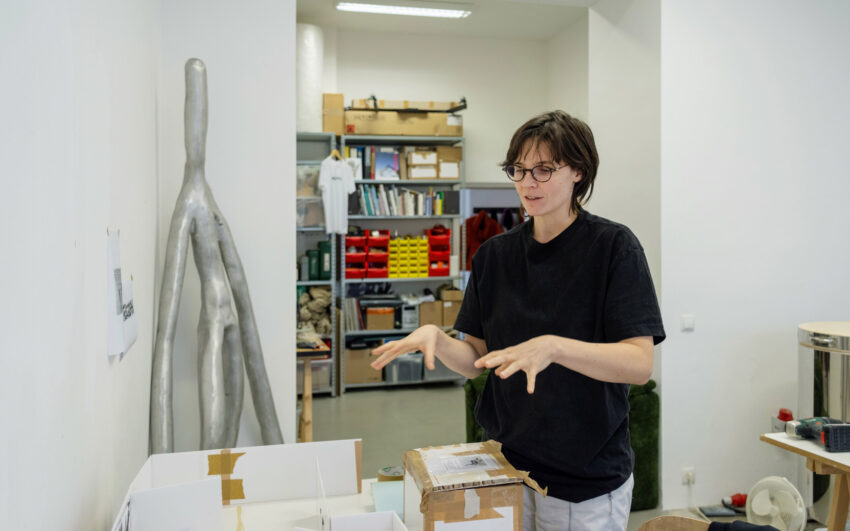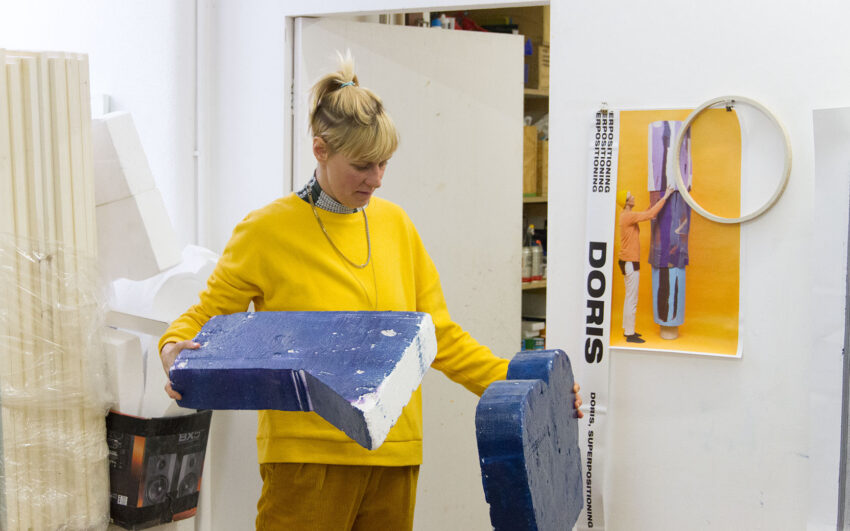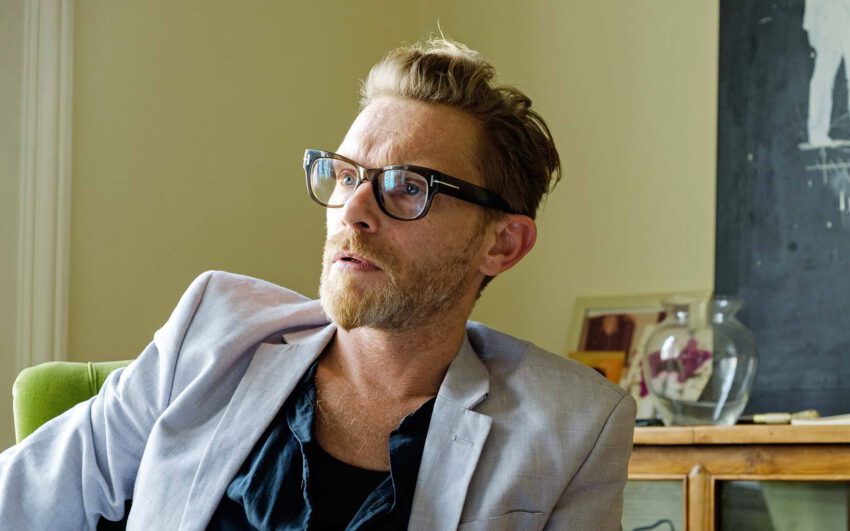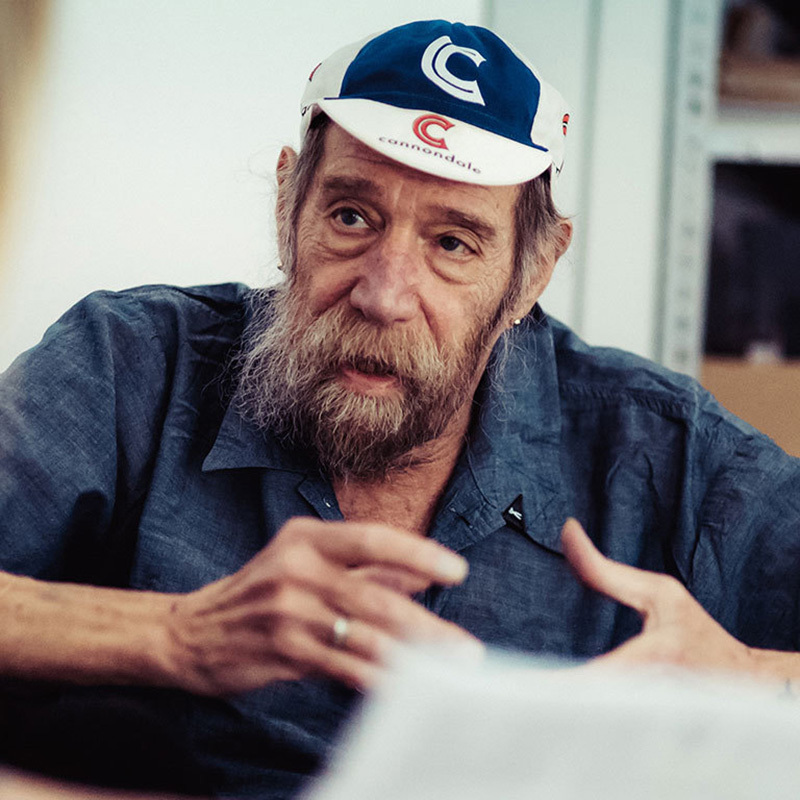Ulrich Lamsfuß can easily be described as a photorealist. Equally important, however, is his reference to Appropriation Art regarding his oeuvre. We met the Berlin-based painter in his studio to learn more about his unorthodox approach to art creation, or “non-art creation” as Lamsfuß ironically refers to his work.
Ulrich, currently you are working on a large-scale flower bouquet, which is a reference to a photograph of an artwork by Jeff Koons. Can you tell us more about why you chose this subject?
Flowers, arrangements, and vases are subjects that I am frequently addressing. It is a motif that surfaces continuously in my work. As a form of storytelling it circles around a constellation or problem instead of coming to the conclusion of a specific solution. It is about repeatability and “exemplariness” in a sense of a second order that I consider the real dominant order, which is my main interest. The “echo chamber” of still life and images, which has always been there, plays another role for me. As an artist, I produce objects that should be valuable enough to be hung on a wall. Referring to a subject or motive like this one exaggerates the question of artificiality. If I, for example, create an image of a work by Jeff Koons, who dealt with the notion of image and referred to diverse sources himself in his work, it represents an immense value that is on the verge of over-affirmation.
So it is about repetition and reproduction of reproduction. Starting with the original flower bouquet, followed by the sculptural interpretation of Koons to the documentation as a photographic image, leading to your reproduction or interpretation?
Exactly.
Does all your work follow a model or template?
Yes, I solely work with or on the basis of templates.
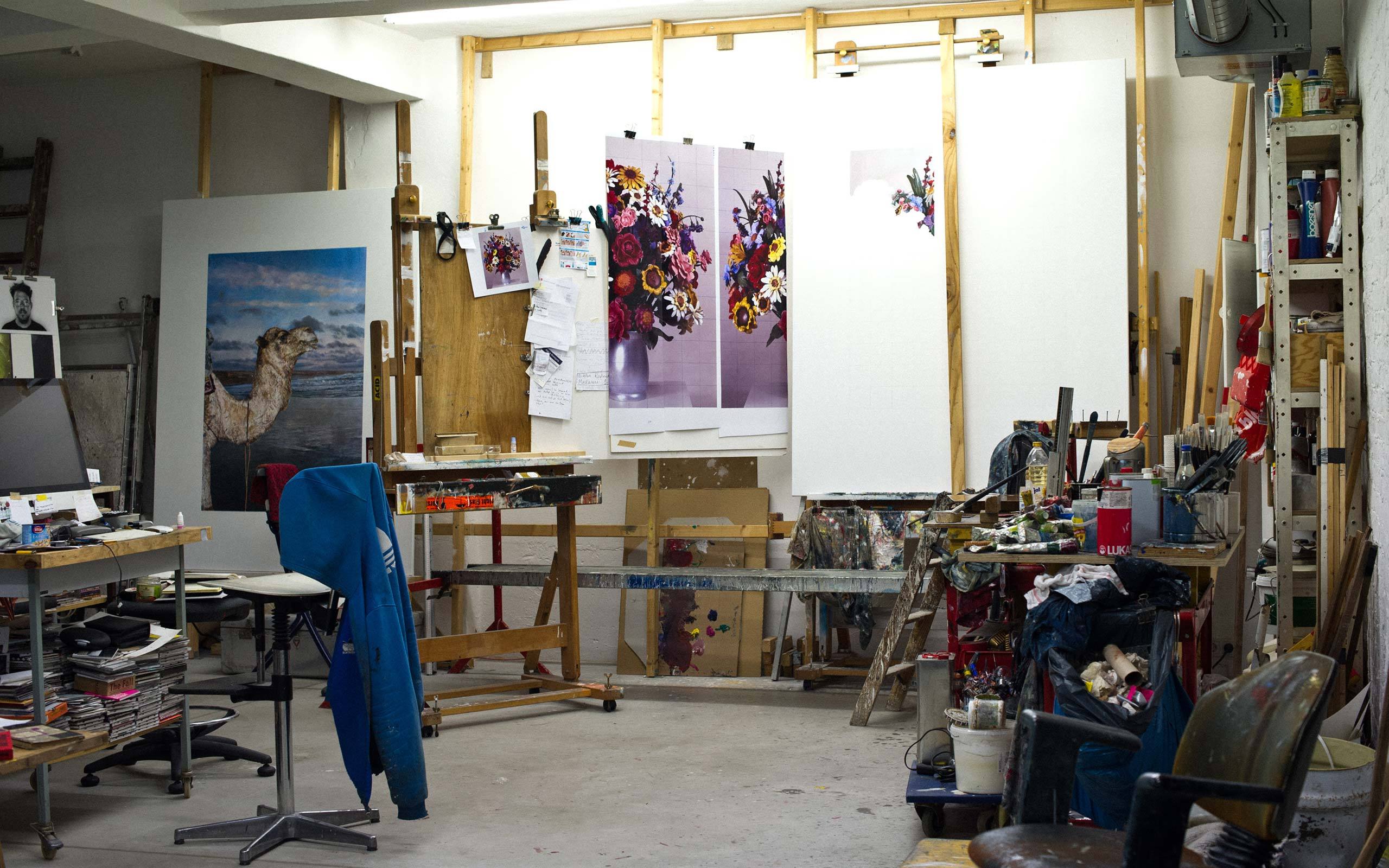
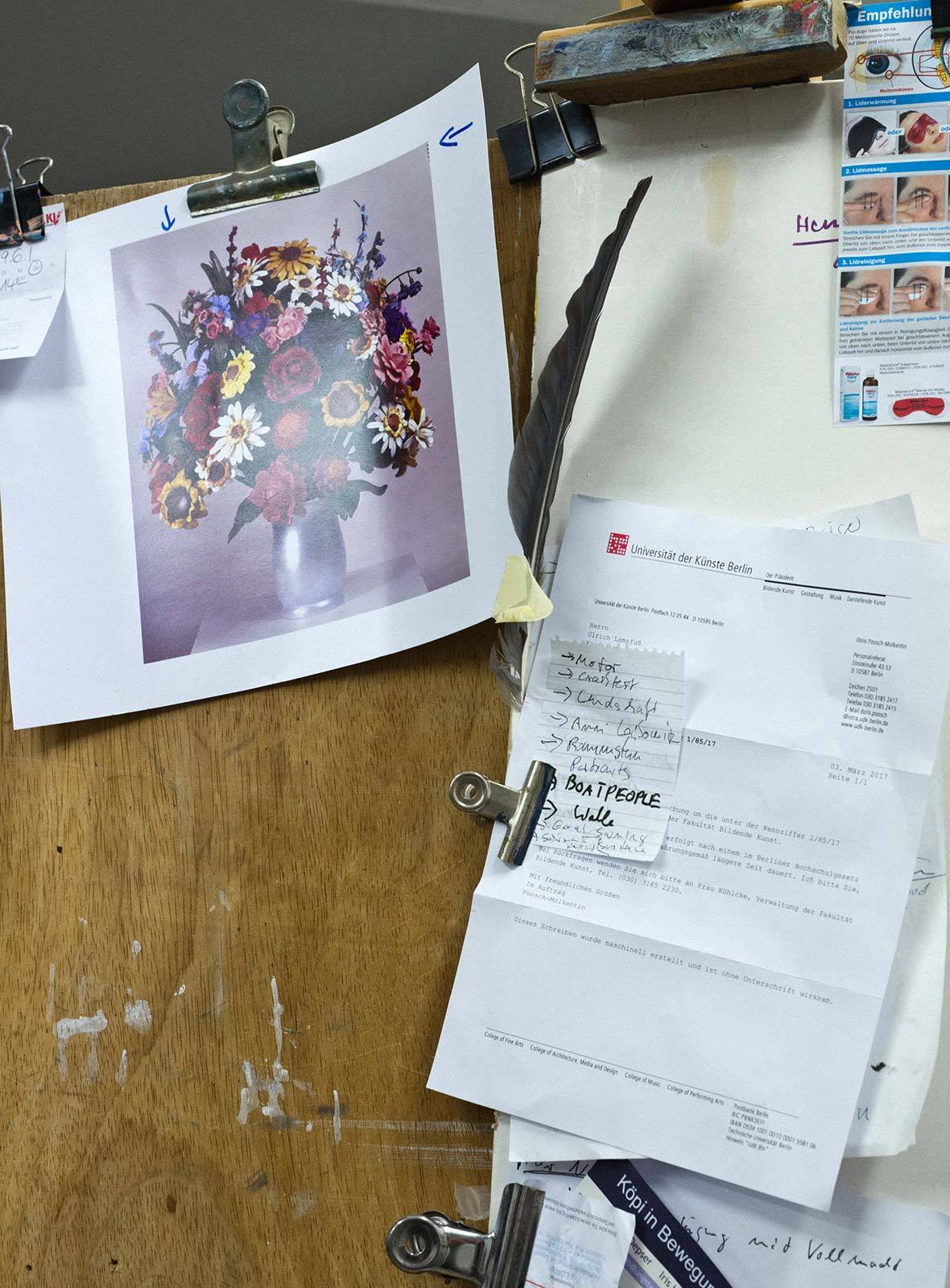
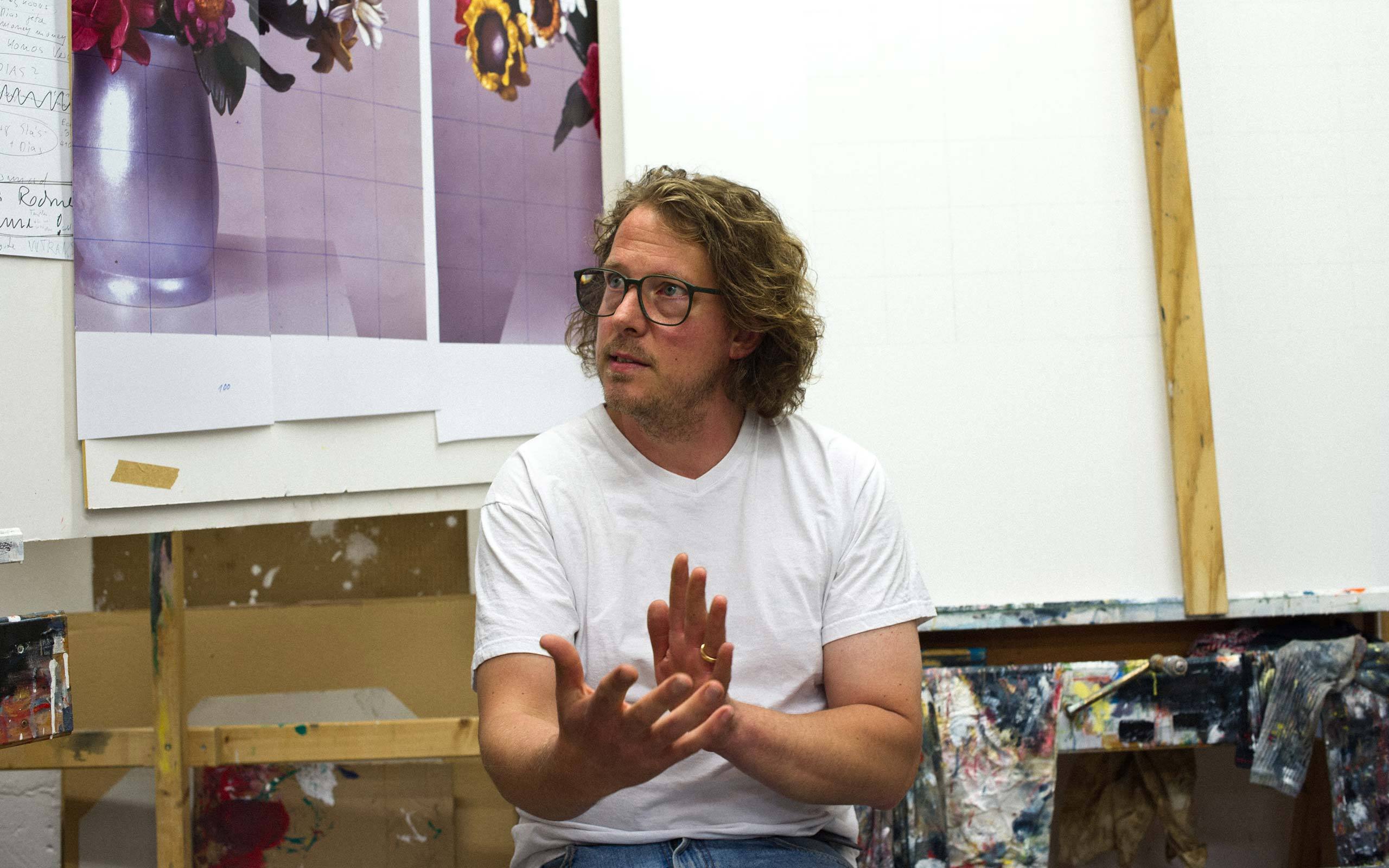
Can you briefly explain your approach?
My technique is very simple, purposeful, and of low complexity – just like painting by numbers. One could actually call it “anti-art” which is void of any artisanship. There is no sketch as a foundation, no signature wipe or varnish technique, no genius involved. Quite the opposite: I function as a kind of plotter. I use a grid to transfer the template to the canvas and place the color where it is supposed to be, following a template, not applying the approach of the paintings of the old masters. I start on the upper left and finish on the lower right side.
In other words, a very immediate method without any greater painterly aspiration?
Yes, my dream was always to paint like a machine. Anti-art! If you work like that, all that matters is that you really want to do this. Will and sincerity are the main priority; nothing (else) has to be there.
In what way does it matter to you?
One question is: What leads someone to complete a 15.000 piece puzzle in his basement? It is that intrinsic driving energy that I am interested in, and it is the same with art. Meanwhile no one really believes that one is still able to truly transmit new information. Nevertheless, art always involves the search for value systems, dispensation, so to speak.
Art for art’s sake. Total meaninglessness, then?
No, absolutely not. Just not actually speaking, also a denial. I have sympathy for the offended and humiliated. Many things on this planet do no longer feel right, to express it carefully. Affirmation is not my thing. I favor the beauty of breaking the rules since I am interested in opposition (resistance?) and ambivalence, as between high and low.
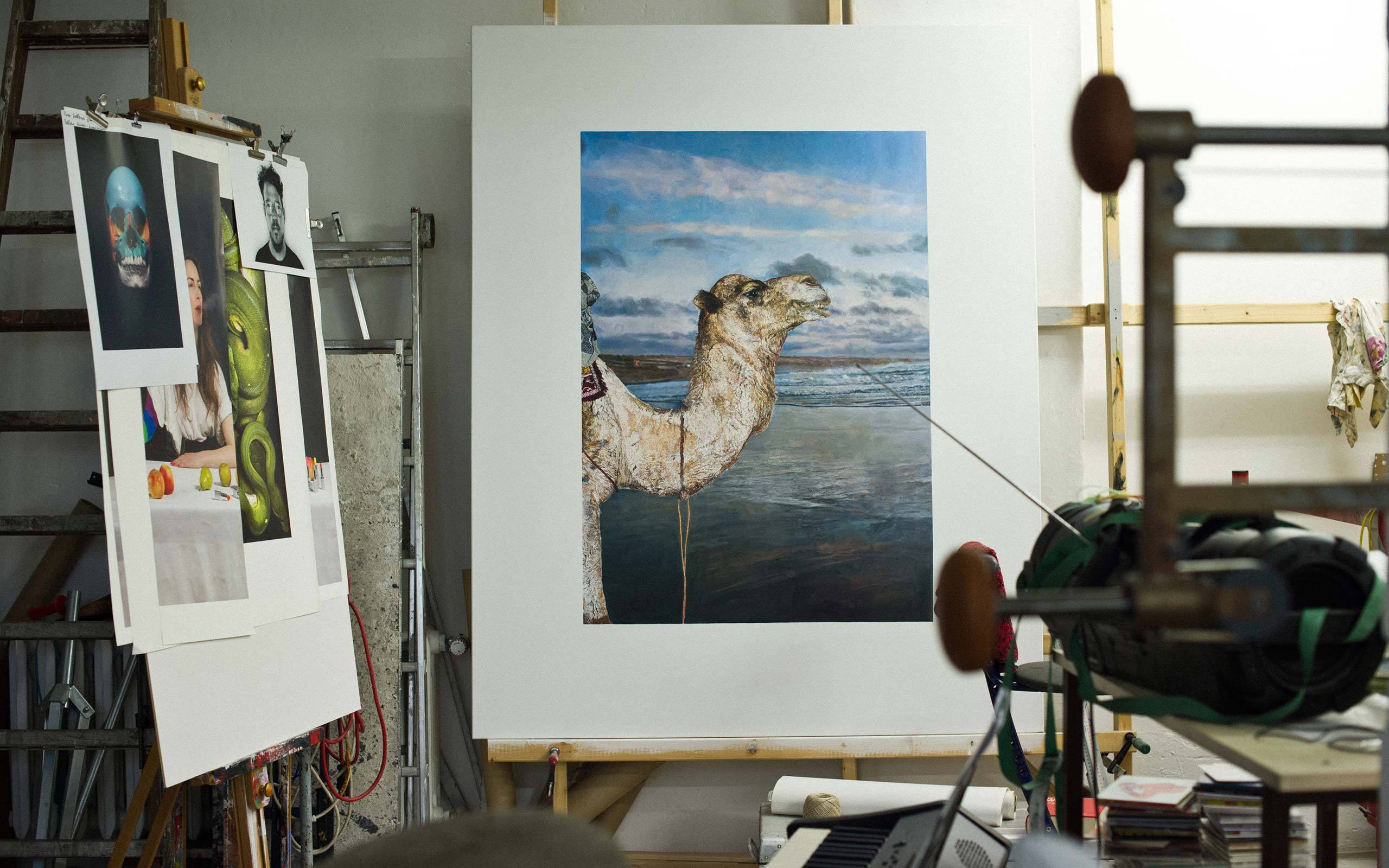
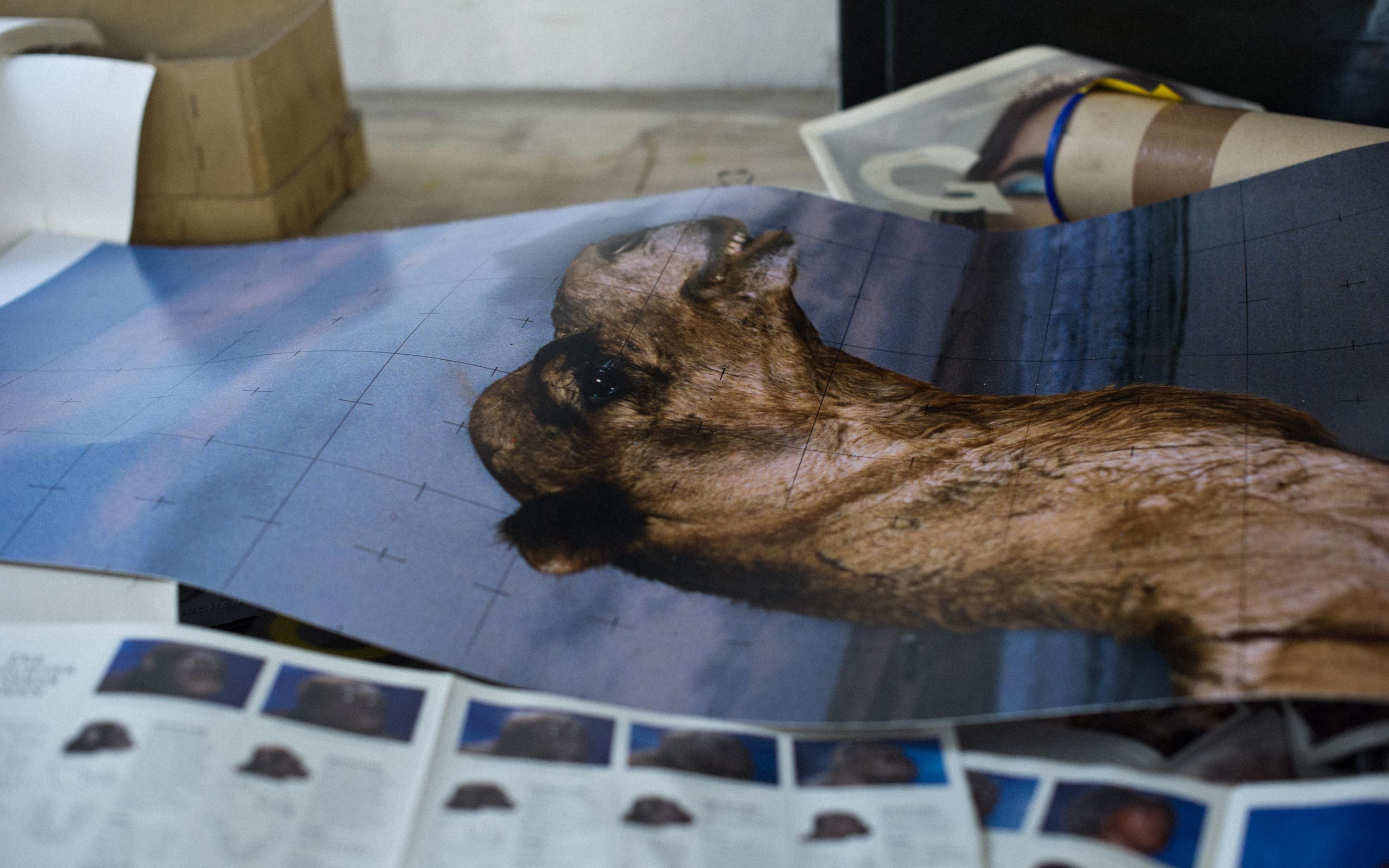
What motivated you to become an artist in the first place?
Deprivation. The sense, that there is a lack of beauty in the world and the question what could it be? Each of my paintings questions if it is worth it, and through the immense work I put in I push up the price. Having said that, I never expected to make money on it. At the art academy in the early 1990s it was not predictable where it would all lead. Before my career, I had the option of looking for a job and pursuing my art on the side. There was an immense feeling of senselessness at the academy – the situation was characterized by a quite hilarious at the same time too serious struggle to somehow create a problem in order to solve it artificially.
Still you did finish your studies!
Officially yes. But I spent almost no time at the academy. I consider myself more an autodidact. Berlin was a good choice though, because here I was able to have a studio without showing up much at the academy. My professor came by once a year to see my work, and that was it. I consider myself a kind of autistic, self-developing system. Besides, there was a lot going on in Berlin, which was much more relevant for my development, such as Rave. The equalization of all hierarchies, the rejection of the artist in the spotlight and the audience in the dark, the rejection of art, the original and the ego – all these topics felt very compelling to me, and they still do. It was a way of saying: Fuck art – let’s dance! It evidently dissolved the feeling paralyzation at the art academy.
What happened next?
One day, I started painting again, rather as a past time, and reduced my questions for content to the ambition of a coffee-table magazine. Considering art as something you do if you have nothing else to do. A nice, low-threshold approach. Minimally invasive – the connection between motif and motivation! This demonstrative escapism still feels right to me until today. I can’t do anything with art if I don’t empathize with what motivates it.
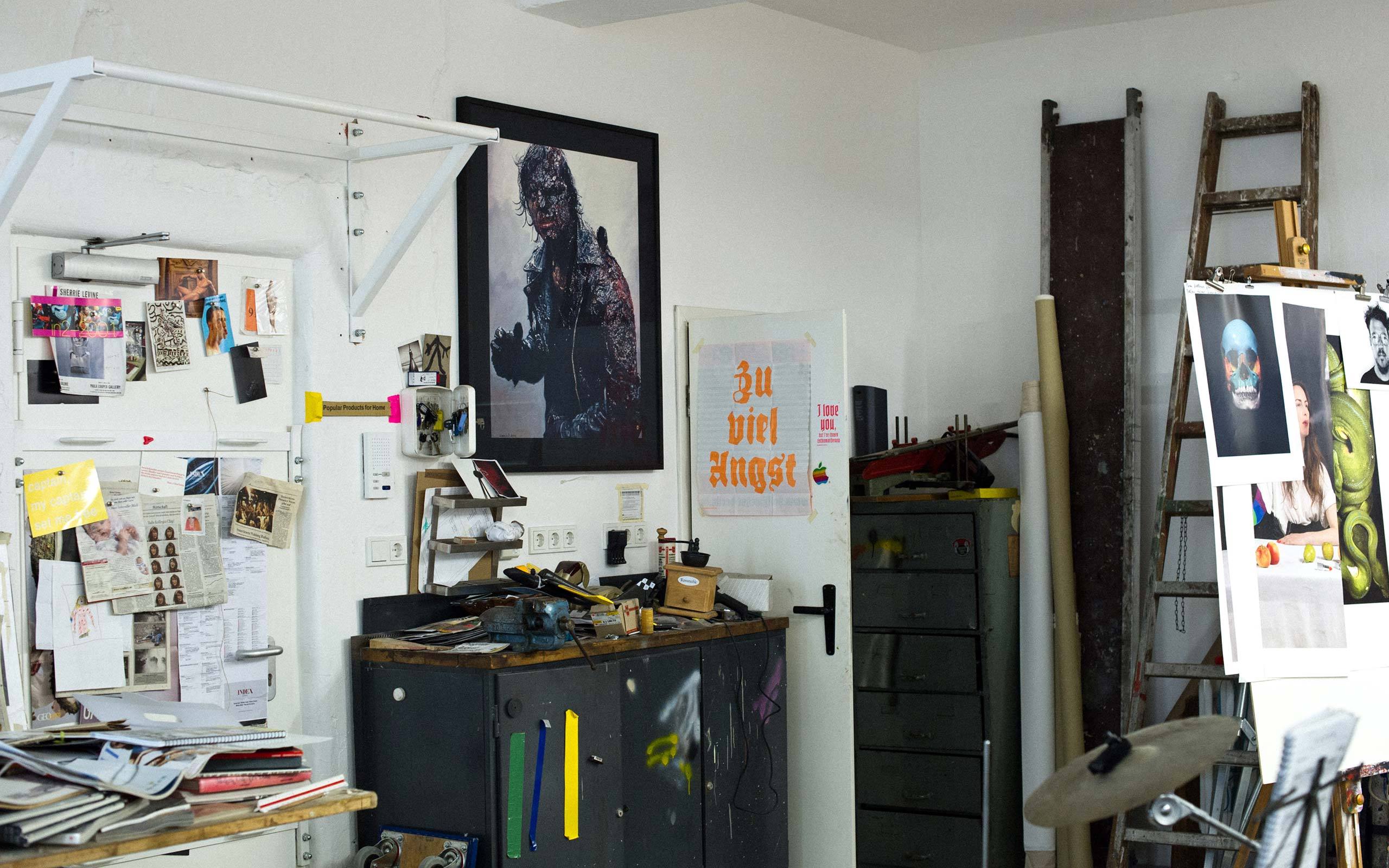
How can one understand your incentive for certain motifs?
There are certain pain points, and if I come across a motif that penetrates them, just like the art-in-art subject with the flower bouquet, it triggers something within me. My current exhibition deals with loose associations to the Grimm fairy tale Little Red Riding Hood. Capucetto Rosso is the title of a play by René Pollesch that is about the fairy tale and about utopia – it refers topically to the fairytale Little Red Riding Hood, but at the time it is a reference to Karl Marx, plus this diffuse Giorgio-Moroder-style longing for Italy title. However, this set the background for a series of my paintings such as the vases with the portraits of Karl Marx. I work always with the idea of a hollow body, the possibility of emptiness and the surface, in this case Karl Marx. As a viewer, one doesn’t need to know all these narratives, but these associative links develop a meaning for me and give me a reason. Obviously different people will interpret the resulting depictions differently. I stand next to the viewer, not opposite to her or him – it is all about a point of view and contemplation. It is about the utopia of a motivated life – if I recognize something, I am motivated to deal with it. My choice of motifs is very personal and comparable to posters in a teenager’s room.
Can you briefly describe the series of the Karl Marx vases and why it became a series of four paintings?
My parents were hippies. This portrait of Karl Marx hung in our living room until I was seven years old, right beside the Communist Manifesto and below the collection of leather-bound volumes of Lenin’s writings. These vases represent a time that was marked by consistent beliefs and value systems, and therefore had a nostalgic touch. In order to describe the present time, Karl Marx regains in relevance. This motif, however, was a vase from the USSR of the 1950s – a country that no longer exists, an artifact of failure, adopted from a book on souvenirs from the former GDR, published by Taschen. I love to paint empty vessels – objects of which one cannot tell what they contain. The decision to paint certain motifs repeatedly is rooted in the idea to paint the very same picture for every room in my apartment. The picture. At the same time I like how the repetition destabilizes the original.
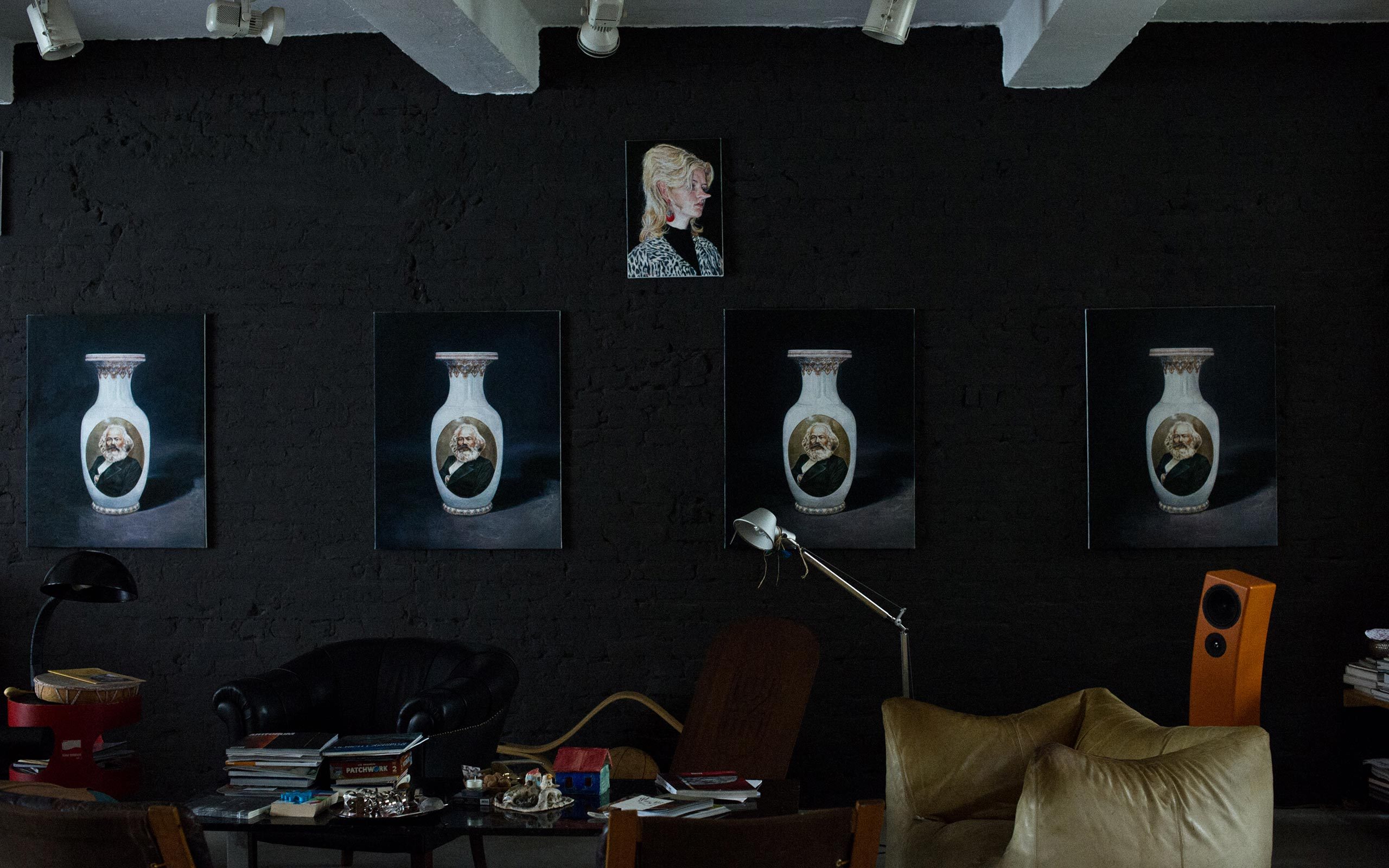
There are also motifs that you generate yourself. How do you create these?
The procedure does not differ much. Certain kinds of questions develop, topics, which recur over and over again. For example, the question “Where does all the money come from in Germany?” and “How is it generated?” In this case, I make investigations about the middle class and the global leaders in Germany. If I cannot find suitable images I simply go out with a photographer and document the products or the production, paint them and feed them to into my photo-blog. One might call it practiced capitalist realism I suppose. I am also interested in fashion (photography), film, reenactments, fakes, and so on. Keeping these artistic strategies in mind I operate on different levels. It doesn’t really matter to me whether something is personal, abstract, or artificial. I don’t really have much news to tell; neither do I have the ambition to do so. For me, it is mainly about skepticism towards values, beliefs, and/or communication systems.
What do you mean by that?
What I really like about pictures is that they remain silent. They transmit information in silence. And I can try to suspend them, to treat them, in order to make them visible again. Therefore, I try to avoid messages that are too clear, otherwise one is immediately in the know, and nothing shifts a perspective more than acquired knowledge. It was called “unlearning” at last year’s documenta 14, if I remember correctly. This is why talking about art tends to be uncomfortable and inappropriate. On the bottom line, I am simply here to produce and to offer a reconstruction of visibility.
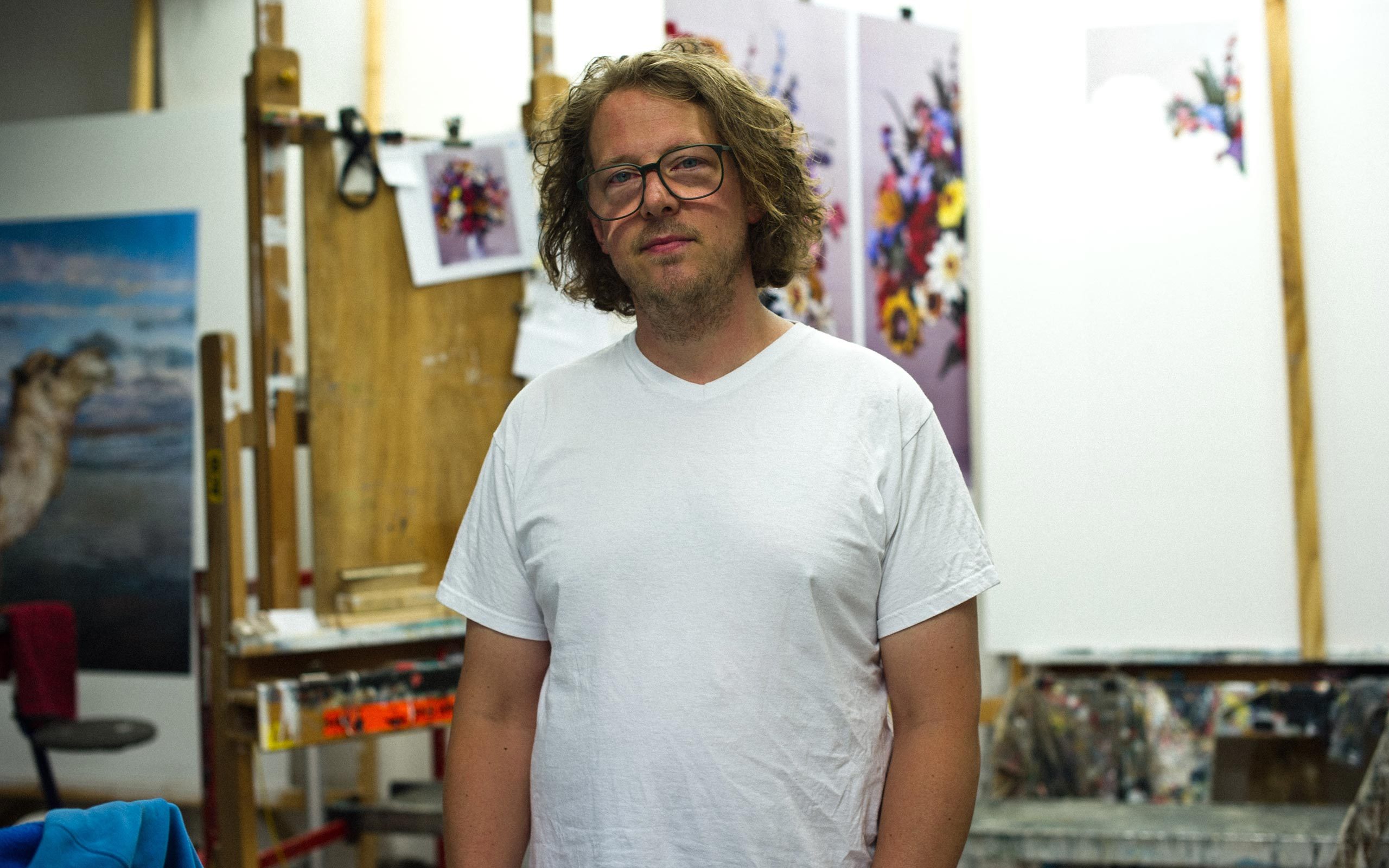
Speaking of production, what is the role of speed when it comes to your work?
I work a lot slower now than I have in the past. If I can paint ten pictures a year, most of them small-scale, it has been a fruitful year. I feel a growing need for precision, I work very hesitant, and I need a lot of time convincing myself that something is complete. There is a very strong persistence, which slows down the process. I would love to explore it even more, just for the sake of dysfunction and rejection of any exploitation logic. The goal would be to paint only one motif stoically over and over again with enormous intensity. I see myself moving extremely slowly through a time characterized by an attention-driven economy that operates on a high-speed level, counteracting acceleration by contemplation. A snapshot that was taken in a split of a second can easily involve two months of painting for me.
You are into “Slow Art” so to speak?
Yes, very slow art. Nearly no art.
This differs from your drawings, doesn’t it?
Drawing has a therapeutic function for me. Since my painting process became so slow, I feel like I need a valve to produce more in less time. Currently, I focus a lot on portraits that I find online on Tumblr.
What are your criteria for your online research?
I look for interesting depictions which I can draw easily, and because I like them. The illumination and the physical effect needs to be consistent, otherwise it is no fun.
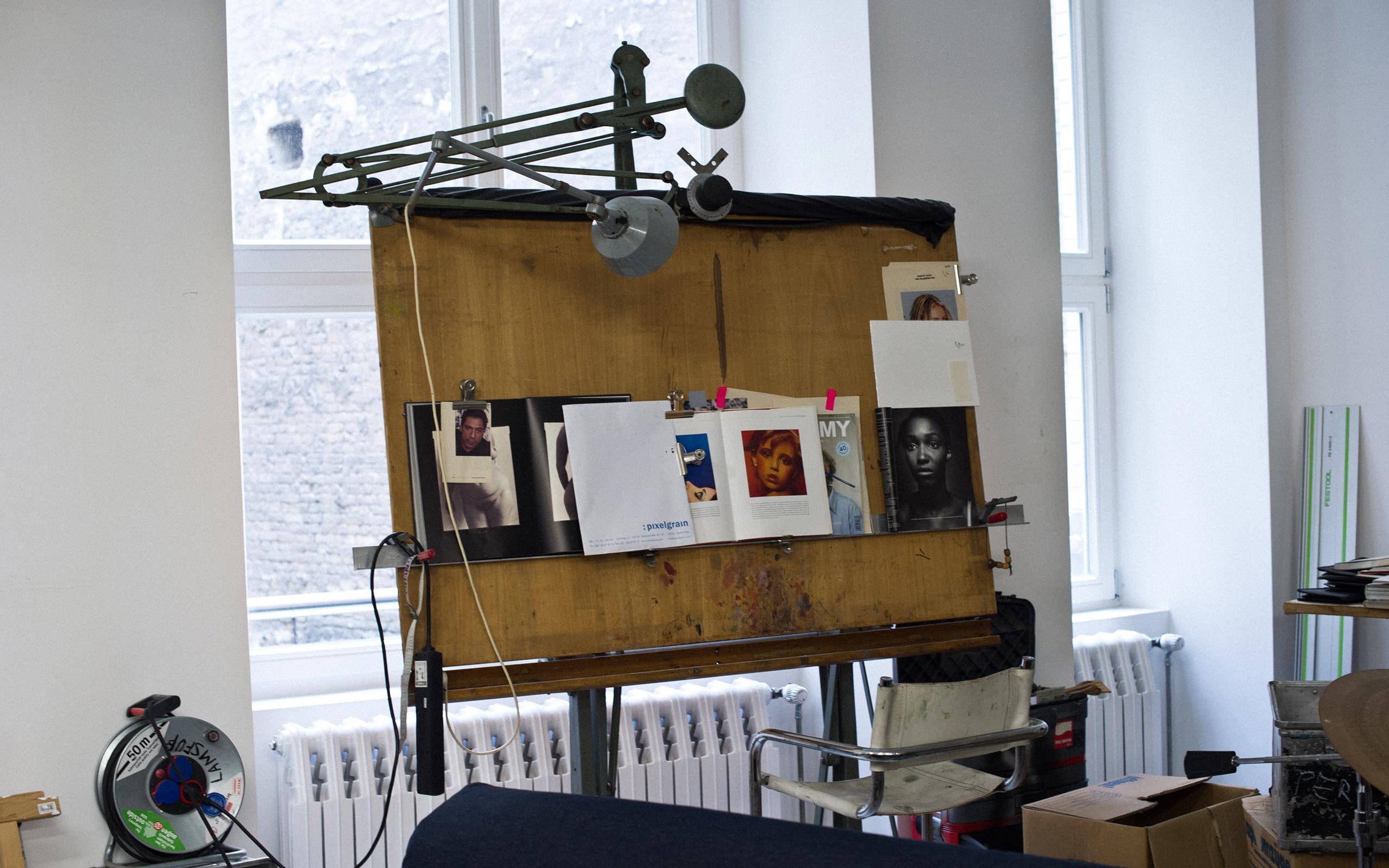
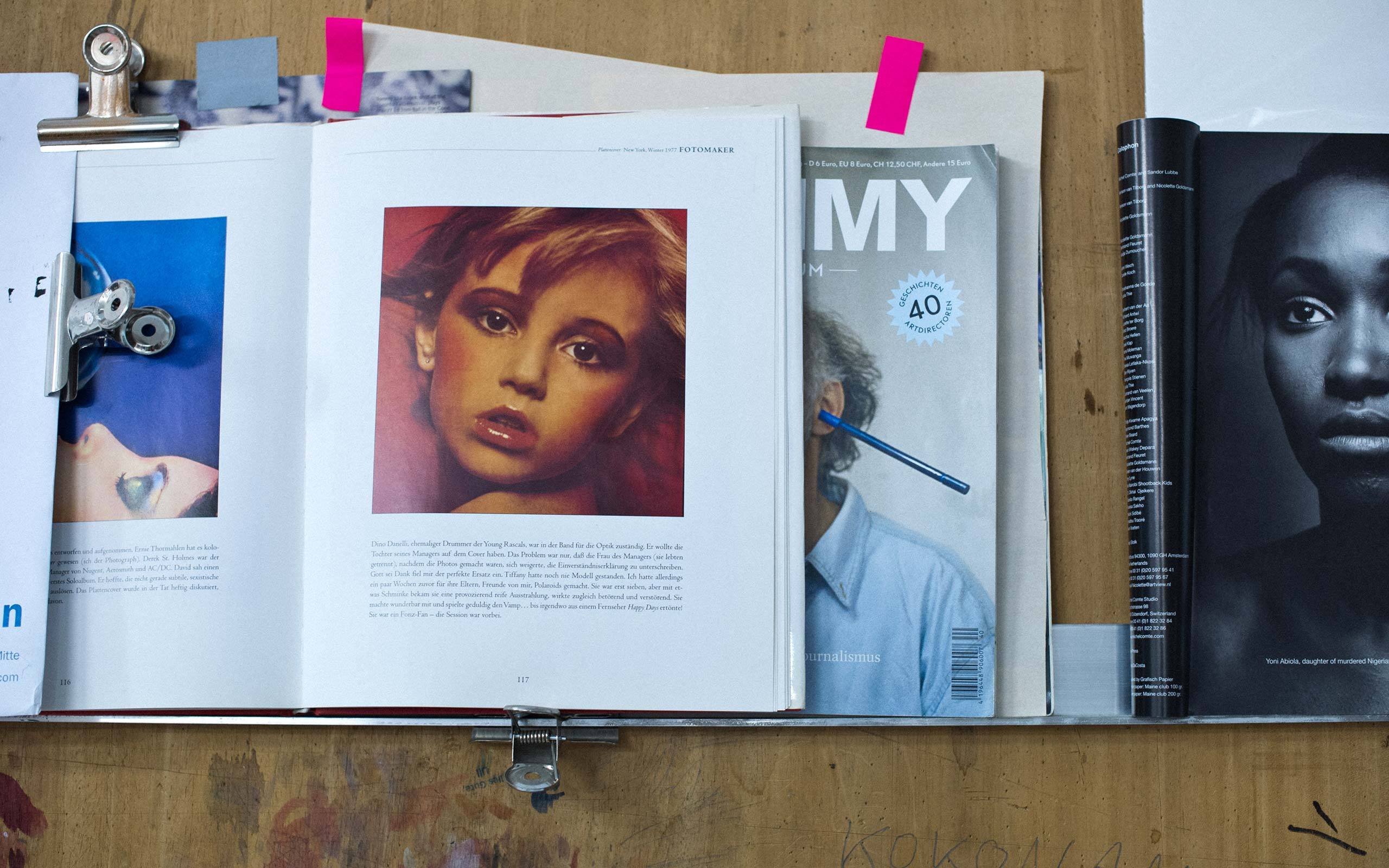
Rights of use are a constant problem in your work, how do you deal with it?
My approach is very practical: if I flip through a magazine and I like an image, why would I not paint it? In light of today’s flood of images I am acting more out of self-defense. It is my way of overcoming the overwhelming stream of information. In the beginning, I was very naïve. In the meantime, I have come to realize that what I did was quite illegal, which is why I have moved to asking the photographers upfront and obtain their permission. All my works name the photographer, the source or other relevant information. Luckily, I became slower in painting, so the organization of rights became easier.
Are you actually simply reproducing or are you putting something on top?
No, for this I would have to be more skilled. Besides, I would work judgmentally which I do not want. I am not after an interpretation, but as in my paintings, after an imitation that is as neutral as possible, although I often do not succeed with it in the end.
How would you like your art to be perceived among viewers?
I would say that I exaggerate perception to a degree that the whole principle of seeing or pointing at something becomes doubtful. It is about sharing my fascination with images, what a picture essentially is, and how it functions. In the end there is always a question, not an answer. Beyond this I want to entertain. Ultimately art is also about entertainment.
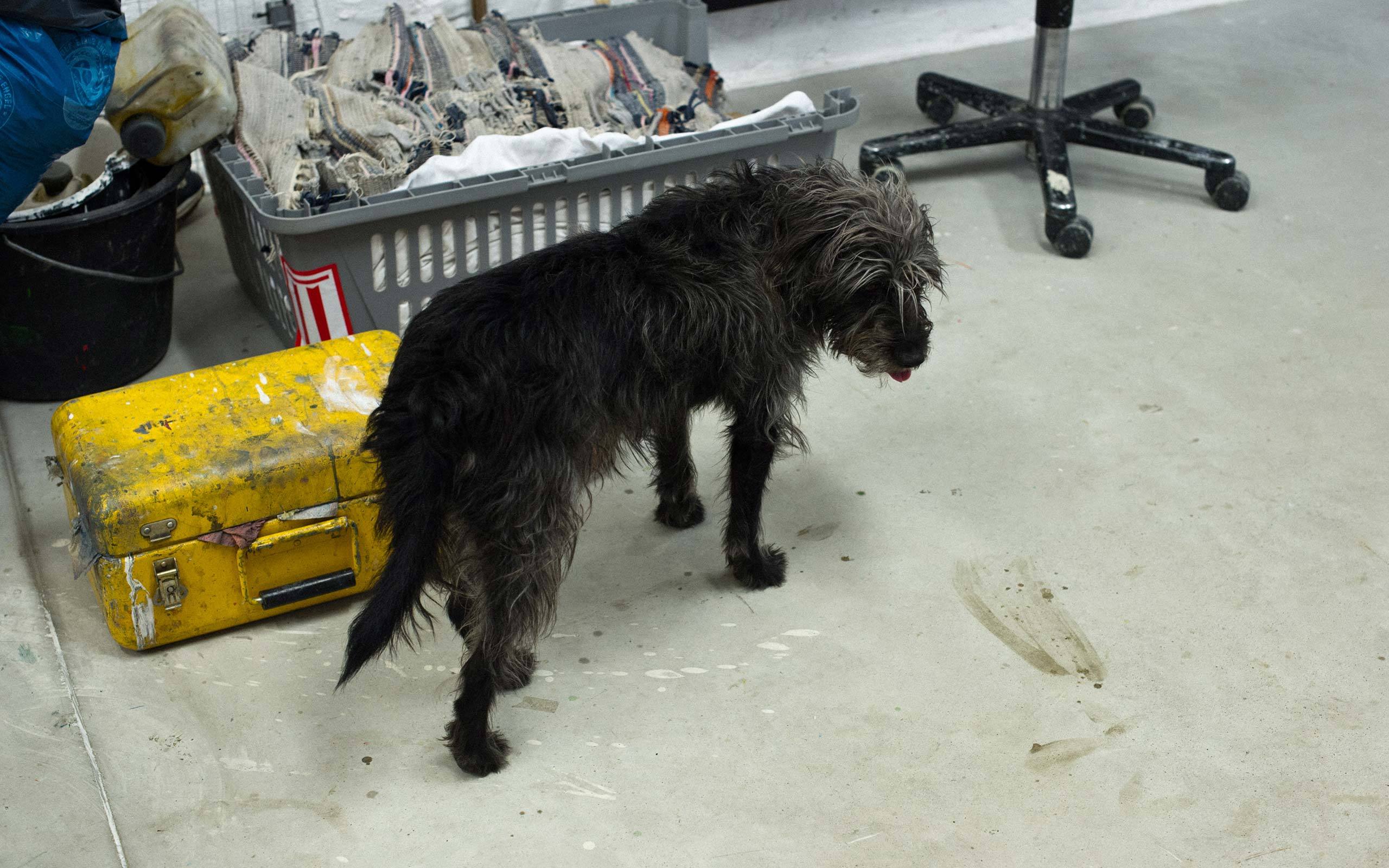
Interview: Agnes Wartner
Fotos: Kristin Loschert
Links:
Galerie Templon, Paris
Galerie Hammelehle und Ahrens, Cologne


